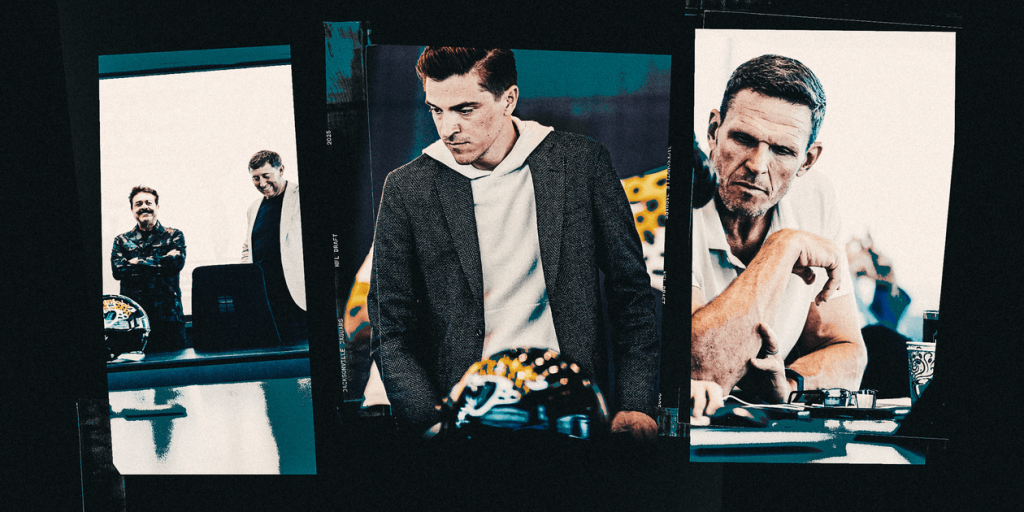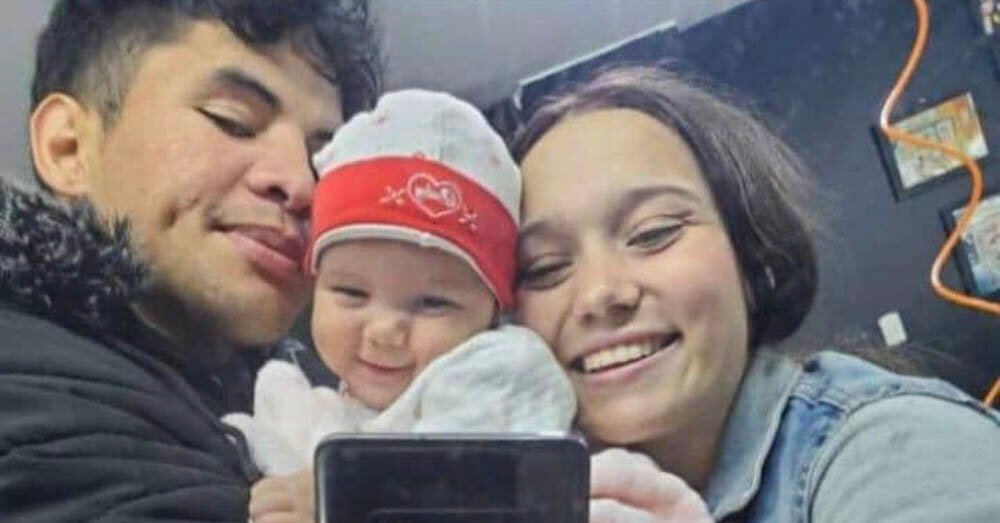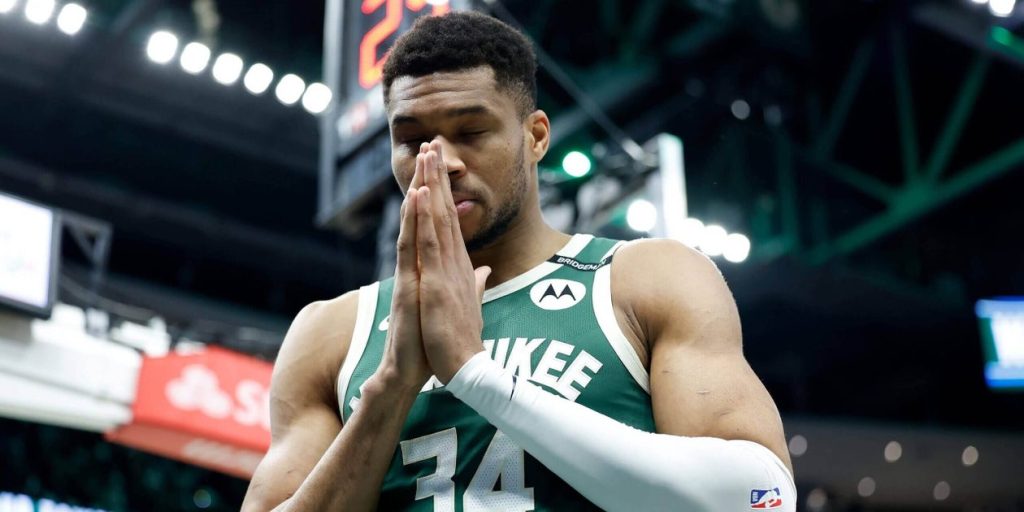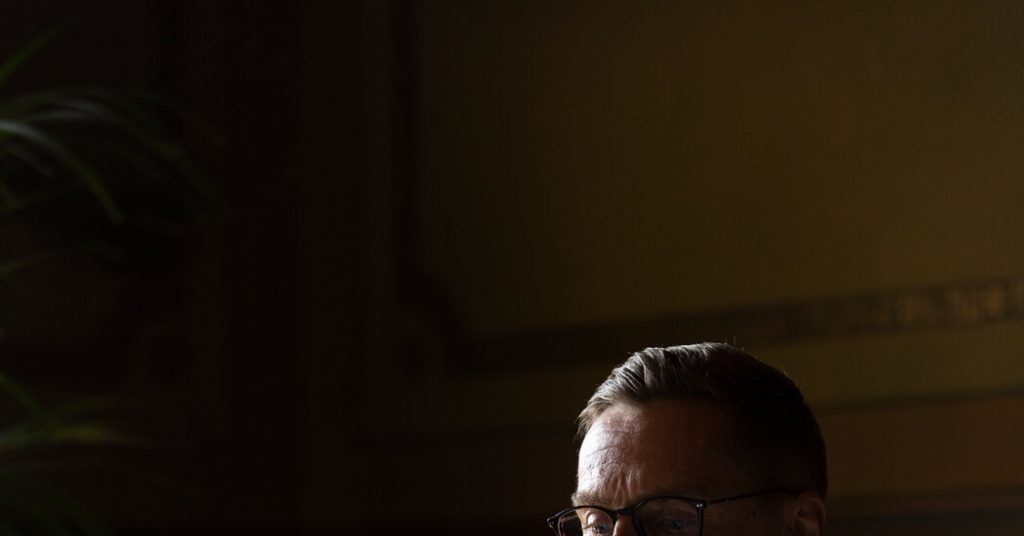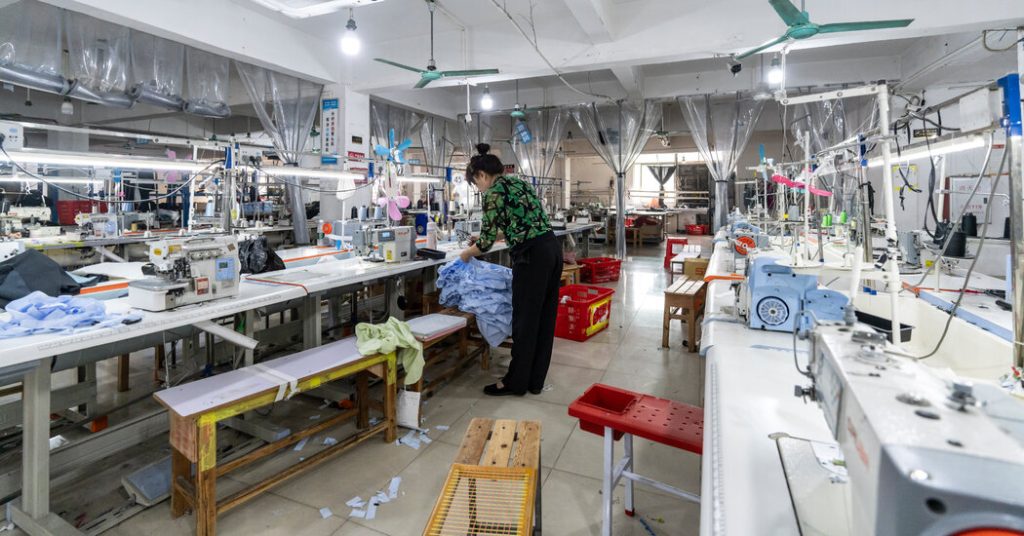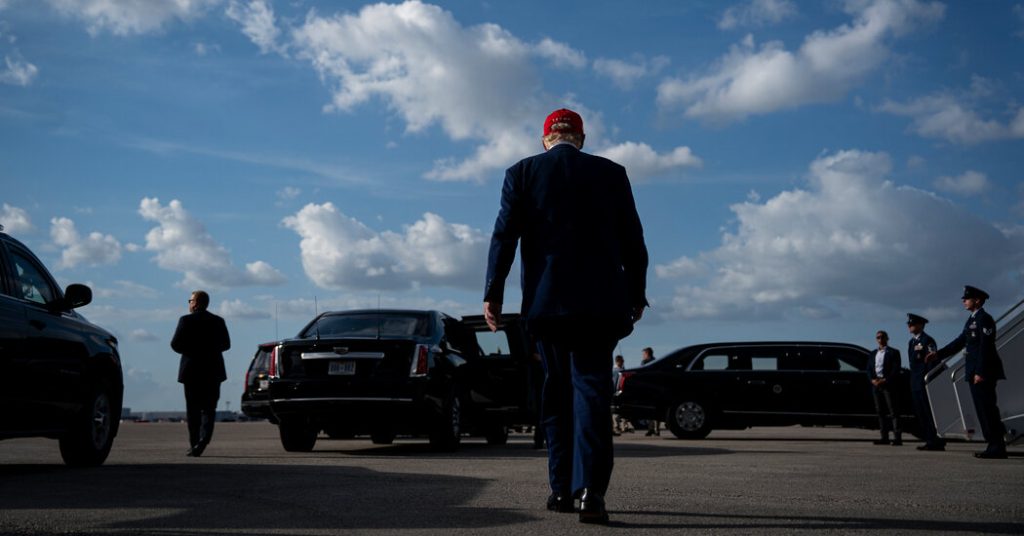JACKSONVILLE, Fla. — At 9:43 p.m. Friday, in the middle of a tense and eventful night in the draft room, James Gladstone had a lot to process. The recently hired, 34-year-old general manager of the Jacksonville Jaguars had already experienced the full brunt of his new role in fast-and-furious fashion, with a seismic trade up, a strategic trade down and the disappointment of two players he coveted getting snatched off the board to foil his plans among the happenings. With the team’s two third-round picks approaching, there were more decisions to ponder.
Soon, once again, the Jags would be on the clock. What would the NFL’s youngest GM do?
Sitting on a table in the far corner of the large draft room on the second floor of the Miller Electric Center and staring up at the unconventional digital draft board he stacked, Gladstone clutched his cell phone in his right hand and spun a football in his left. Suddenly, he had an inspiration. Nodding toward Liam Coen, the rookie head coach sitting 10 feet across from him, Gladstone — who, since setting foot in the team’s training facility two months ago, has seldom been without the football — said, “Let’s get a couple of tosses in, Liam.”
Gladstone stood up. Coen stayed seated. A quick game of catch ensued that would have made the ghost of Shoeless Joe Jackson proud.
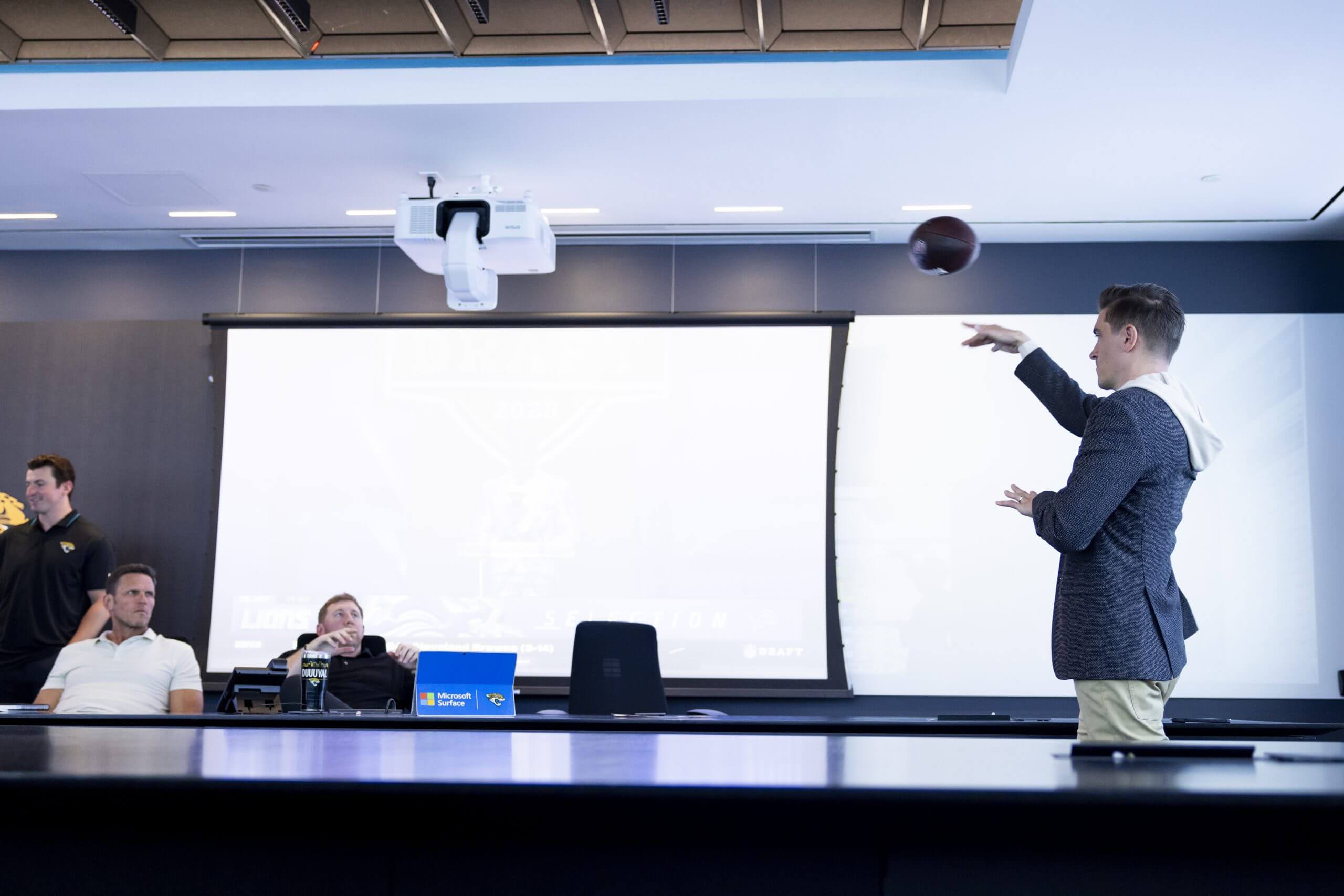
The whirring of their spirals could be heard throughout the draft room, which at that moment included fewer than a dozen people. Then, suddenly, those sounds were drowned out by something much louder, as if every car in the parking lot were suddenly backfiring.
Team owner Shad Khan looked up with a quizzical expression. “What the hell is that?” asked Tony Boselli, the Hall of Fame tackle who Khan hired in early February as his executive vice president of football operations. Mike Perkins, who has been with the franchise since its inception — his title is senior director of football technology and special projects, and his duties include officially sending in the Jaguars’ draft picks to the NFL — picked up his cell phone and called a friend named Ken Babby. “How long is this gonna last?” Perkins asked Babby, who owns the local baseball team — the Jacksonville Jumbo Shrimp. The Miami Marlins’ Triple-A affiliate, whose home stadium is just across the parking lot, was punctuating a 7-0 victory over the Gwinnett Stripers with a postgame pyrotechnic display.
“Fireworks!” Perkins announced after hanging up the phone. “It should be over soon.”
A night earlier, the Jaguars had been responsible for the 2025 NFL Draft’s most explosive moment: the bold, on-the-clock trade that landed Heisman Trophy-winning, two-way threat Travis Hunter, a move designed to make a statement about the long-suffering franchise’s new direction and mentality. The trade had been in place since April 7, contingent upon quarterback Cam Ward going No. 1, and was kept completely under wraps until draft day.
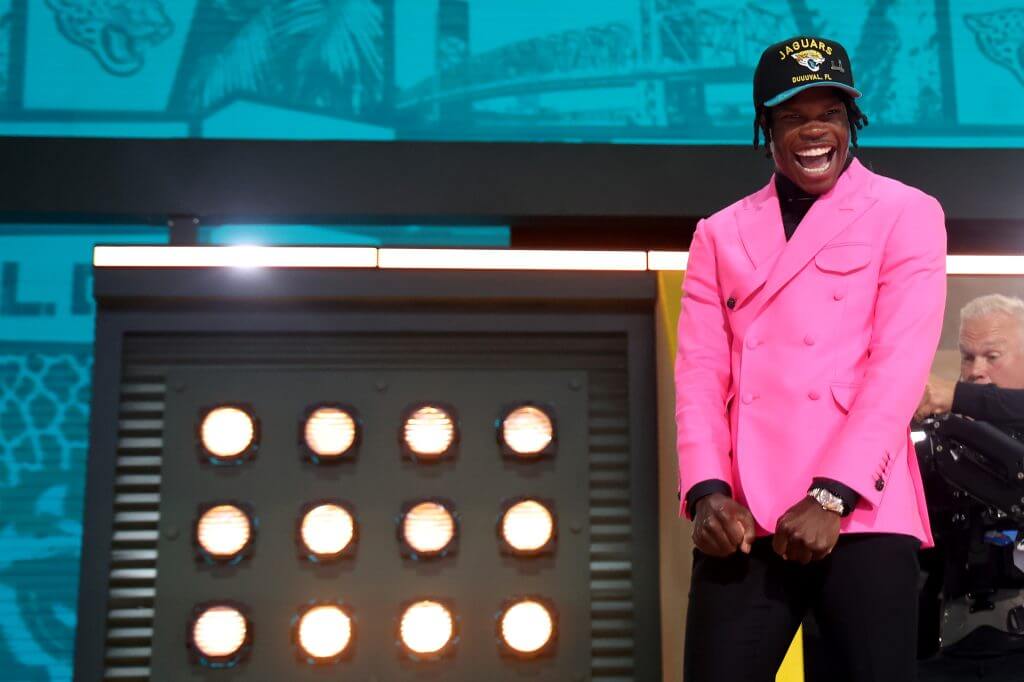
Once the deal went down, some people inside the Jaguars’ training facility began referring to Gladstone as the “Silent Assassin.” By early Friday morning, the team’s selection of Hunter was the talk of the sports world, and Gladstone, before leaving the draft room, smiled and said, “Hey, it’s an entertainment business.”
Come Saturday night, as team executives, scouts and coaches celebrated with their spouses at a nearby brewery, there was optimism there will be plenty of noisemaking to come — ideally, and most importantly, on the football field.
“This was a great weekend, and I can’t say enough about James’ leadership, which was world-class,” Boselli said shortly after leaving the gathering. “But as he and I both know, the most important thing is what happens on that grass, and everything we do is designed to support that. What’s taking place here is an abrupt and dynamic change — a complete reset. It’s a new day, and we’re going to make that very obvious.”
Gladstone, the second-youngest general manager in NFL history — behind only his Cleveland Browns counterpart, Andrew Berry, with whom he swung the massive trade for the No. 2 pick — hasn’t been shy about his intent, either. Running a draft room for the first time, and emerging with nine players he’d previously identified as possessing the “intangibly rich” attributes the new regime covets, gave him a chance to back up his proclamations.
“I’ve been talking a lot — a lot — since I took this job,” Gladstone conceded Sunday. “But to actually do something, and stand on business, is a great feeling. People believe action much more than words. It was good to get some action.”
The action began in early April, when Gladstone and Berry began hammering out terms for the deal that would allow the Jags to move up three spots and pick Hunter, who’ll get a chance to achieve his dream of playing wide receiver and cornerback at the NFL level.
Gladstone arrived as the last major piece of an organizational reset this offseason. Coen was hired away from the Tampa Bay Buccaneers on Jan. 23, two days after he’d told the Jags he was dropping out of the search. Khan coaxed him back into the mix, firing general manager Trent Baalke to signal a complete organizational overhaul.
“It was clear that (Coen) was the best candidate,” recalled Tony Khan, Shad’s son who also serves as an owner and chief football strategy officer. “And he was not going to take no for an answer.”
Coen, who’d helped quarterback Baker Mayfield produce the best season of his career in 2024, was highly attractive to Khan because of the owner’s investment in — and regard for — quarterback Trevor Lawrence. The Jags selected Lawrence with the No. 1 pick in the 2021 draft and, last June, signed him to a five-year, $275-million contract extension.
“Our quarterback was everything,” Shad Khan said Friday morning. “In a sense, he was the only thing.”
Boselli, the No. 2 pick of the 1995 draft and the first selection in franchise history, was hired on Feb. 3. The team then embarked on a search for a new general manager that Khan half-jokingly described as “torturous,” with 10 candidates interviewing for the job.
Boselli and Coen, who’d overlapped with Gladstone during a pair of stints on Sean McVay’s Los Angeles Rams coaching staff, were both highly impressed with his virtual interview. Gladstone was the last candidate to interview in person — on Friday, Feb. 21, shortly before the start of the scouting combine — and the first 90 minutes, by his own admission, were “a little bumpy.”
At that point, the subject turned to the Jaguars’ roster. Gladstone proceeded to give a comprehensive evaluation, wowing the owner in the process. At one point, Shad Khan interrupted him mid-sentence to ask, “Where are you getting this from? Are you reading this somewhere?” Gladstone gave a confused look. “No,” he said, “these are my evaluations. I’ve watched your games, and this is my evaluation of your entire roster.”
“Just keep going,” Khan said.
Suffice it to say, Gladstone nailed it.
Recalled Boselli: “At that point, I thought, ‘This is our GM.’”
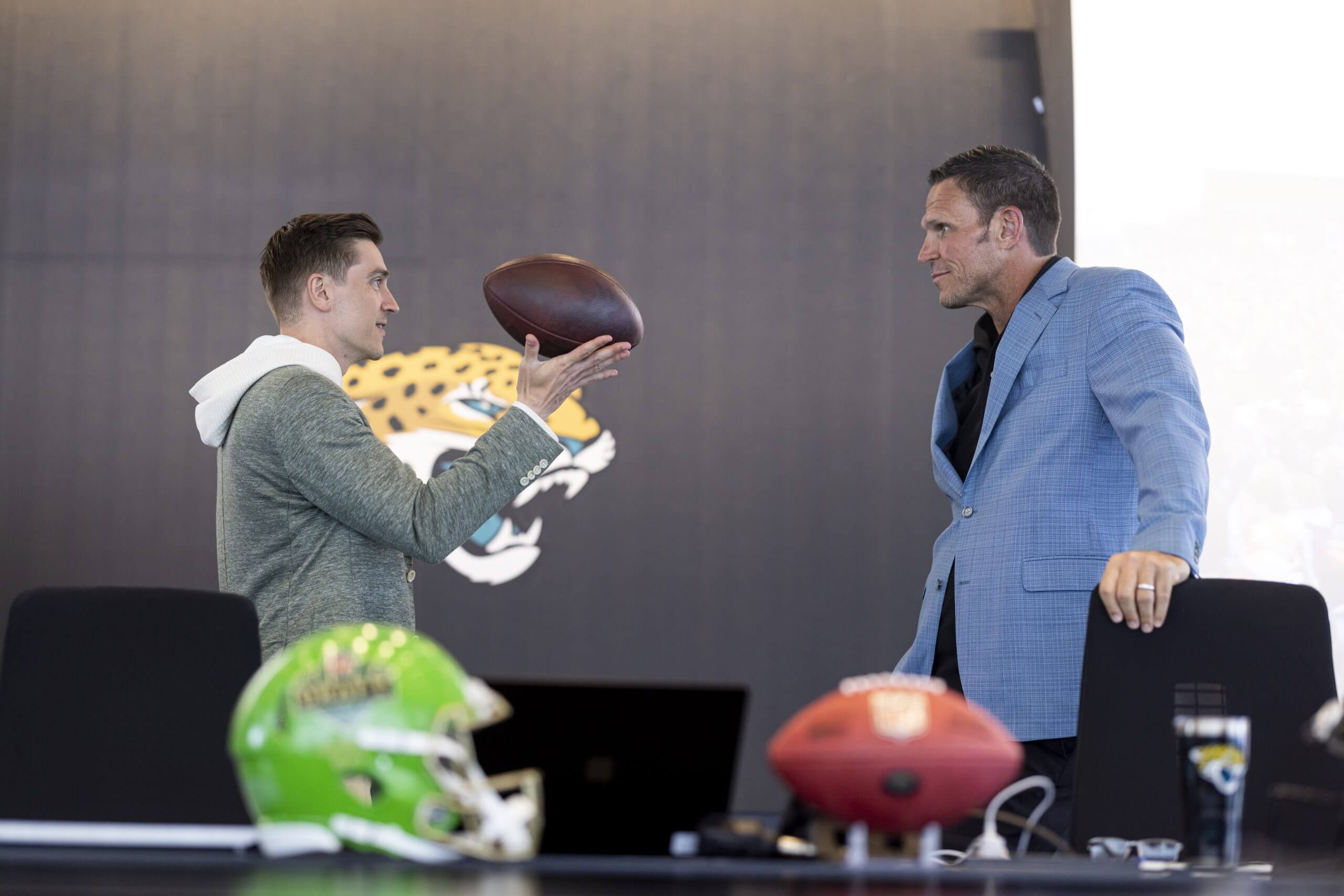
While Boselli and Coen debriefed, Gladstone was given an extended tour of the facility. They agreed that Gladstone was their top choice, then went to Khan, who came to the same conclusion. Meanwhile, the stall tactics continued; Gladstone was put in a conference room and told to sit tight.
“I really wasn’t allowed to leave,” Gladstone said, smiling.
By day’s end, he was hired, with a structure designed to ensure alignment: Gladstone, Coen and Boselli all report directly to Shad Khan. Then, two months before the start of the draft, their push to revitalize the franchise commenced in earnest.
When the expansion Jags, with Boselli as a rookie left tackle, began playing in 1995, nobody expected much. Boselli and his teammates, coached by prickly taskmaster Tom Coughlin, saw it differently. By Year 2, the Jags were in the AFC Championship Game. They went back again three years later, as the No. 1 seed, before being upset at home by the Tennessee Titans.
“There was a clear understanding of who was in charge and how things were gonna get done,” Boselli recalled Thursday afternoon. “It wasn’t always fun. It was a grind. But you knew where you stood. We weren’t the most talented team. But — to use a term that James loves, but didn’t exist then — we were ‘intangibly rich.’”
Though Khan, by all accounts, has been an engaged and supportive owner, he has struggled to attain on-the-field success. The Jags, who went 4-13 last season, have reached the postseason only twice since Khan purchased the team in 2011. There have been some regrettable decisions in recent years, most glaringly Urban Meyer’s disastrous 11-month tenure as head coach.
In February, Khan gathered Coen and his newly hired assistants in a room and offered his support. Recalled one coach, “Shad came in and said, ‘Every team in the NFL is set up to win 8 1/2 games. The fact that we’ve won so few — we are an extreme outlier. I don’t know how to fix that. That’s your job. But anything I can do to help you do that, please let me know.’ It was so sincere, and it really hit home. It was the most vulnerable I’ve ever seen an owner.”
That humility is something Khan’s newly installed trio of decision-makers will strive to emulate. Said Boselli: “We want to make sure we are not ego-driven or have personal agendas, because those two things will kill an organization. And I have confidence that if one of us got out of whack, the other two would call it out and get us back on track.”
This is not to say the men now running the Jags don’t have swag. Gladstone’s signature saying: “If there’s an opportunity to be bold, we won’t flinch.” Often, he utters it with football in hand, an affectation he adopted soon after accepting the job — and one which, come Friday, he would pass on to his glitziest acquisition.
Before the trade with the Browns could become official, Cleveland would have to be on the clock with the No. 2 pick — and Ward, as expected, would have to be off the board. Had the Titans somehow pivoted and taken another player, or traded the pick to a team that did, the Browns would have called off the deal and taken Ward at 2.
Boselli, Gladstone, Coen and others in the know spent most of Thursday bouncing around the facility in giddy anticipation, still unable to share their secret with the world at large. They couldn’t wait for the reveal, not just because they loved the player — Hunter was perhaps the nation’s best wide receiver and cornerback at Colorado, and hopes to become the NFL’s first full-time two-way starter in more than six decades — but also because he emblematized the qualities they crave in their locker room. As Coen said, “He seems to love fishing and helping kids — and especially his family — and being great at football. And that’s it. And he’s a very hard worker. It’s kind of amazing.”
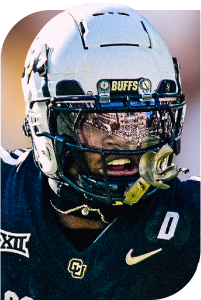
Travis Hunter Colorado HT
WT
YR
AGE
Will give an NFL staff exciting options on both sides of the ball
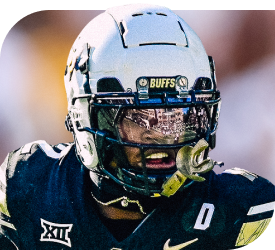
Just before the deal went down Thursday night, Khan told Gladstone in the draft room, “Let’s make history.” This would be the first trade into the top two for a non-quarterback since 1997. Then there were hugs and high-fives and various acts of celebration, including the rarest of sights: Both coordinators (Grant Udinski and Anthony Campanile) pumping their fists in triumph, eager to try out their shared new toy.
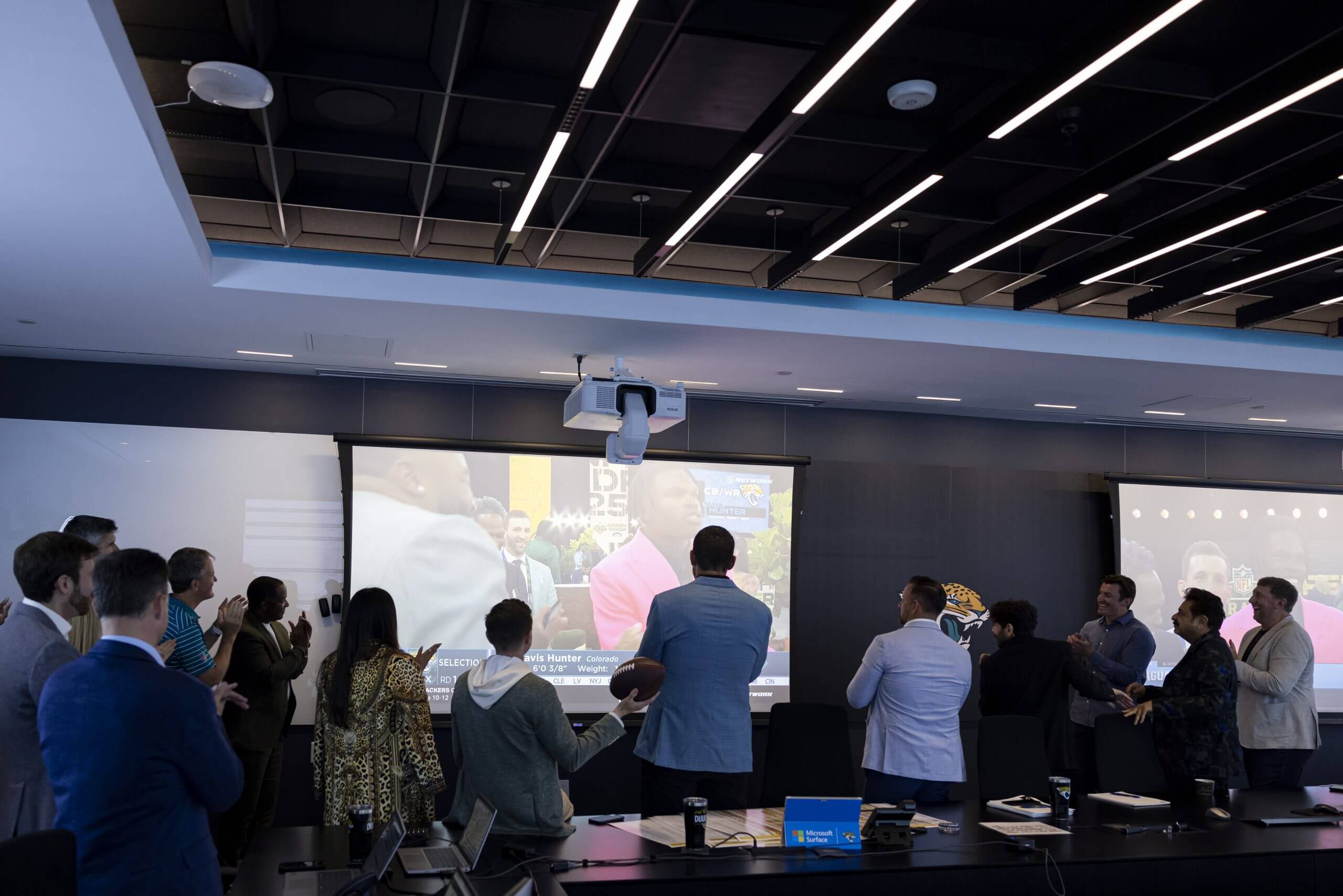
The afterglow of the big move continued Friday when, shortly before noon, Hunter arrived at the team’s facility. He met with Shad and Tony Khan, Boselli, Gladstone and Coen in the elder Khan’s office, immediately fixating on the football, which Gladstone was spinning in his hand. Almost intuitively, Gladstone tossed it to him. From then on, it was Hunter’s. “His first takeaway,” Gladstone said.
Hunter had the ball during his news conference in the expansive team auditorium, at which he managed to straddle the line between extreme self-confidence and endearing authenticity. The NFL is a weird league sometimes: It seems that unlike his college teammate and quarterback, Shedeur Sanders — whose stunning fall to the fifth round was the draft’s other big story — Hunter was not penalized for his bravado.
Late Friday afternoon, Hunter spent about an hour in Boselli’s office with Boselli, Gladstone and Coen. Each of the Jags’ decision-makers was blown away by the exchange. Gladstone called it “jaw-dropping.” Said Boselli, “This dude’s wild. His maturity level for 21, how he views what he wants to do in football, how he prioritizes his life … it’s crazy.”
When the dust settled, Hunter departed with a football, but not with the football — Gladstone had somehow reclaimed the original. What he didn’t have was a second-round pick, having surrendered it in the Hunter trade, meaning the Jags had a lot of time to consider their options for the two third-round selections (Nos. 70 and 88). Less pressing was the fact that the Jags had given up their 2026 first-rounder. While working for his mentor, Rams general manager Les Snead — the man who inspired the “F— Them Picks” mantra — Gladstone once went six consecutive drafts without a first-rounder.
“The aura of a first-round pick — it sounds amazing, when it’s just something in the future,” Gladstone said as the start of Friday’s second round neared. “Once it’s actually time to pick, it’s not always what it seems.”
There are many traits that factor into the stacking of a draft board, and NFL teams devote thousands of hours to identifying which players possess the attributes they ultimately deem most important. To quantify that in a simple and collective form, Gladstone, with input from Boselli and Coen, created a “Jaguars DNA” measurement — ranging from 1 to 9 — that gave weight to qualities such as competitiveness, mental and physical toughness and love of football. Each player’s score was displayed prominently to the right of his name on the digital draft board that covered one wall of the draft room. “We highlight it for a reason,” Gladstone explained. “That’s where we all start the conversation. It’s the driving force for any dialogue. Not everyone’s built for this place.”
On the board, positions were grouped into vertical rows, while the top-to-bottom columns were divided into unconventional categories, beginning with “Math Changers” (only Hunter and Boise State running back Ashton Jeanty made it that high), and including “Reliable Starter,” “Starting Talent, Buyer Beware,” “Early Contributor,” “Intangibly Rich Enough To Contribute Early,” “Talented Enough to Contribute Early, Less Refined” and, at the bottom, “Not Fit For Us.”
Though there are countless permutations concerning which players might be selected in which round — depending upon what other teams do with the picks prior — Gladstone went into the draft with a clear sense of what and who he wanted. While striving to organize his draft board like a coach’s “call sheet” on game day, Gladstone also possessed a small, laminated card that served as a sort of cheat sheet — a list of 31 players he especially hoped to come away with at various points of the draft. Obviously, he couldn’t get all 31; the Jags had 10 picks going in, and nine after the trade for Hunter. Of immediate interest Friday were the two third-round picks, with a handful of players who might be available at those spots high on their wish list.
In a perfect world, the No. 70 selection would boil down to a choice between two players: Central Florida running back RJ Harvey and Louisville edge rusher Ashton Gillotte.
In the real world, things would get far more complicated.
As the second round began, the excitement level remained pronounced. “This is a new dawn — can’t you feel it?” said Shad’s daughter, Shanna, who is also an owner and was in the draft room all three days. “The energy is palpable. It’s a big deal.”
It was Gladstone’s job to keep the vibes high. As the second round played out, the rookie GM was locked in. With the Rams on the clock, I asked Gladstone to predict which player his former team would take with the 46th selection. He squinted at the board for a moment and replied, “Terrance Ferguson, tight end, Oregon.” A minute later, an NFL official at draft headquarters, over speakerphone, announced the pick: Ferguson.
“We call that a bullseye,” Gladstone said.
Soon, the Harvey vs. Gillotte debate was in full force. Gladstone and Boselli seemed to be gravitating toward Gillotte, partly because he was much, much higher on their board than the next-rated player at the position. “We have three first-round defensive linemen,” Coen said, adding, half-jokingly, “how many do we need?”
Coen was smitten with Harvey’s talents as a runner, which were undeniable. His pass-blocking prowess? That was a different story. “It’s not his superpower,” Boselli said. “His superpower is making people miss.” Coen and Gladstone also loved another back, Virginia Tech’s Bhayshul Tuten, but felt they could get him in a later round based on draft projections.
Gladstone called in running backs coach Chad Morton for further discussion. At Coen’s instruction, Harvey’s shirtless photo from the combine was projected onto part of the screen covering the far wall, displaying the running back’s muscular physique. Gladstone said to Coen, “We’re walking into game day, pads are getting strapped, jerseys are coming on. Who do you want in there? I already know what the answer is.” Coen smiled.
As the debate continued, Gladstone pointed out another player relatively high on the board: West Virginia guard Wyatt Milum, who had a gaudy “Jaguars DNA” score next to his name. “I’m seeing that 8.0,” Gladstone said.
Sensing that each of those players might be gone by the latter part of the third round, Gladstone instructed Arri Landsman-Roos, the Jags’ vice president of decision science, to begin investigating trades that could allow Jacksonville to swap its second third-round pick (No. 88) for “something back into the first half of the 70s.”
As the second round neared its latter stages, Coen became antsy. “Let’s just say ‘f— it’ and get him,” the coach said, in apparent reference to Harvey. Gladstone preached patience.
“We’ve got to roll the dice at some point,” Gladstone said, meaning that the Jags should take the risk that their desired players could be gone, stay true to their board and resist the compulsion to surrender further draft capital. “I mean, what’s the fun of just going out and getting your guys?”
Five picks from the end of the second round, Harvey went off the board. Someone went to inform Boselli, who’d slipped out into the snack area outside the draft room.
“Who took him?” Boselli asked.
The Denver Broncos, he was told.
“Bastards,” Boselli said, smiling. Fourteen picks later, the “bastards” would select another of the Jags’ potential targets — Illinois wide receiver Pat Bryant, aka “Duval Pat” — albeit much earlier than Gladstone would have considered drafting the Jacksonville native.
If Thursday night was Gladstone’s chance to make a splash, Friday was his first venture into the deep end. He was about to be confronted with a flurry of activity that even experienced general managers would have found challenging.
Shortly after the third round began, another potential option surfaced: The Detroit Lions called, floating a possible trade that would send their third-round pick (No. 102) and a pair of 2026 third-rounders to the Jags for the 70th selection, a fifth-round pick and a 2026 sixth-rounder. The Lions still weren’t sure they wanted to do the deal, but they were laying groundwork. Gladstone, as he did frequently throughout the three days, consulted via speakerphone with one of his most trusted lieutenants, senior vice president of football analytics Jake Temme. Hired away from the Rams after Gladstone got the job, Temme was back in Southern California, where his wife had just given birth to the couple’s first child.
“Two extra threes are pretty tempting,” Temme said.
A few seconds later, Gladstone got an offer from the Rams: their second-round pick next year for the 70th selection.
Now there were three scenarios: Try to close the trade with the Lions; accept the trade with the Rams; or stand pat and take the player they wanted. Before the discussion could begin in earnest, a collective groan filled the room: The Kansas City Chiefs, with a pick acquired from the Titans in last year’s trade for cornerback L’Jarius Snead, snagged Gillotte with the second pick of the round. With the Jags’ selection just four picks away, quick decisions had to be made.
“Well, now the (Detroit) trade sounds good,” Tony Khan said.
Added Temme: “I’d agree to that trade right now.”
“I love it,” Gladstone said. Then, gesturing to director of player finance Trip MacCracken, who was communicating with Mike Disner, the Lions’ chief operating officer, the GM exclaimed, “Let it rip, baby!”
Yet Detroit wasn’t ready to make the deal. The suspicion in the Jags’ draft room was that the Lions had been targeting Gillotte. Also, minutes earlier, Gladstone had instructed MacCracken to ask for a sweetener: Instead of including their fifth-round selection in 2025, the Jags proposed trading their sixth-round pick.
A few minutes later, MacCracken called back for a status check. “They’re considering it,” MacCracken told Gladstone.
The Patriots took Washington State receiver Kyle Williams with the 69th pick, putting the Jags on the clock. Gladstone brought up the Rams’ trade proposal: “That future second will likely be late, but a second is still a second.”
Finally, MacCracken got clarity from Disner: The trade terms were a go. “Detroit’s in if you want it,” he announced. Seconds later, Gladstone fielded a phone call and grimaced. “The Rams are out,” he said. “Guess who they wanted? Gillotte.”
Four minutes remained on the clock. It was decision time. “Let’s do the (Detroit) deal,” Gladstone said, and MacCracken put the process in motion.
Then things got dicey. MacCracken nailed down the trade with Disner and both contacted the assigned NFL representative to make the terms official. However, a communications issue with the league slowed down the process.
The clock was ticking, with very real consequences. In 2003, the Minnesota Vikings’ top decision-makers, believing they’d finalized a trade that would give the Baltimore Ravens the No. 7 selection, watched in horror as a snafu led to two teams passing them in the draft order after their allotted time expired. It was one of the most embarrassing moments in draft history, and Gladstone, as a rookie GM, had no desire to relive it. As the seconds ticked away, he said, “We should probably decide on a player to pick here, in case we have to put one in.”

Lions general manager Brad Holmes, who’d worked with Gladstone in the Rams’ front office, also had reason to be stressed. Whichever GM ended up picking still had to call the prospect in question — a common practice to ensure, as a failsafe, that no late-breaking events had negatively impacted the player’s status. With 90 seconds on the clock, Holmes called Gladstone.
“Hey,” Holmes asked, “are we gonna be able to make this deal, or what?”
Responded Gladstone, “Well, I’m looking at Trip, and he has a phone on each side of his head — so I would like to think this is getting done.”
A few seconds later, MacCracken put down one of the phones and gave Gladstone a thumbs-up.
“All right, we’re good!” Gladstone told Holmes, echoing the news Holmes had simultaneously received in the Lions’ draft room. “Enjoy life.”
“I appreciate the love,” said Holmes, who quickly hung up to call Arkansas wide receiver Isaac TeSlaa, selecting him with seconds to spare.
Throughout the scouting process, as talent evaluators, coaches and executives pore over game film and other data and engage in a seemingly endless succession of meetings, it’s common for them to develop what are known in NFL circles as draft crushes. In Gladstone’s case, Tulane defensive back Caleb Ransaw was such a player. For Boselli, LSU offensive tackle Emery Jones Jr. was the crush in question, and the former USC star fell hard.
As the third round played out, the prospect of Boselli saying goodbye to his draft crush became a frequent joke in the draft room. At one point, Gladstone asked Temme, “Are you ready for the moment when Tony cries?”
Said Boselli, “We’re at least going to need a moment of silence when my favorite player is gone.”
In all seriousness, the 6-foot-7 Boselli was careful not to bigfoot his rookie GM, even when it came to picking an offensive lineman. Milum, with his lofty “Jaguars DNA” score, was an attractive prospect — and was a player also regarded highly by Boselli. It soon became clear that offensive line coach Shaun Sarrett, summoned into the room by Gladstone, had developed a draft crush of his own, on Milum. Gladstone needed to make a decision. Milum was the guy he wanted.
It was around this time that Gladstone initiated the game of catch with Coen and the fireworks started going off. As the noise increased, the rookie GM stayed calm. Now, given his desire to land Ransaw and Milum — either of whom the Jags would have taken with the 70th selection had they not consummated the deal with Detroit — Gladstone explored the idea of trading back up. The 102nd pick, obtained from the Lions, was the final selection of the third round. The Pittsburgh Steelers had reached out with an offer that could have allowed the Jags to move up to 83, but Gladstone deemed it insufficient.
At 10:20 p.m., however, the Texans made a more attractive proposal: Their third-round pick (No. 89) for the 102nd selection and the fifth-rounder Jacksonville had acquired from the Lions. MacCracken ran it by Gladstone, who wanted more. “Would you guys kick back a seventh?” MacCracken asked his Texans counterpart. “We’re just kind of talking this through.”
The Texans told MacCracken they’d consider the counteroffer and get back to him. Gladstone, holding a cell phone in his right hand and spinning the football with his left, sat on the corner of a table and waited. A few minutes later, the Texans agreed, adding a 2025 seventh-round selection to the deal. Gladstone waited to make sure that Ransaw and Milum would be on the board, and when the Green Bay Packers took TCU wide receiver Savion Williams with the 87th pick, cheers filled the Jags’ war room.
MacCracken called in the trade terms, this time without incident. The Jags, already on the clock with the 88th selection, now owned consecutive picks but had only 2:27 to submit the first one. Gladstone gave Ransaw’s name to Perkins, who entered it into the league’s computer system but was told not to hit send until instructed. The GM, dialing on a landline, painstakingly entered Ransaw’s phone number. Their conversation was brief, given the situation. Gladstone gestured to Perkins, who made the pick official. Gladstone then repeated the drill with Milum, mistakenly calling the player’s agent. Gladstone ended that call, dialed another number and finally got Milum on the phone. With 20 seconds on the clock, Perkins sent in the second pick, ending the night’s draft-room drama. Everyone exhaled.
A few minutes later, Gladstone stood near the front of the room, soft-tossing the football to himself. “When you’re on the call (with Ransaw) — and your (next) pick is now up — you’d better have a quick convo,” he said, smiling.
With the next pick, the Rams selected outside linebacker Josaiah Stewart, another potential Gladstone target. Jones went off the board next, courtesy of the Baltimore Ravens, an organization long revered for its drafting prowess. “Tony’s gonna be devastated,” said Coen.
However, Boselli — once again, in the snack area — took it well.
“Baltimore?” he repeated. “That doesn’t surprise me.”
As he finally prepared to leave the facility, with only a few hours of sleep awaiting him, Boselli was blown away by what he’d witnessed.
“How about those fireworks?” Boselli asked rhetorically. It was clear he wasn’t talking about the detonations that followed the Jumbo Shrimp game.
“I told you,” Boselli said, “he’s a damn assassin. No matter how hectic it gets, he doesn’t get shook at all.”
On Saturday, the excitement subsided. Though one team made an overture to acquire the second pick of the fourth round — with Tuten as its presumed target — Gladstone stuck with his plan and took the swift runner, then selected Notre Dame linebacker Jack Kiser three picks later. The Jags waited out another 87 picks before they were on the clock for their first of two sixth-round selections, and to their astonishment and delight, Auburn linebacker Jalen McLeod (a player Gladstone was considering taking with one of the fourth-round picks) was still there for the taking. Gladstone’s final three picks: Navy safety Rayuan Lane, projected as a special-teams ace; USC center Jonah Monheim; and Syracuse running back LeQuint Allen.
